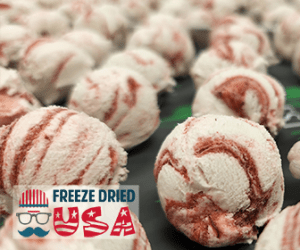Freeze-drying, also known as lyophilization, is a process that removes water from a substance while preserving its structure and integrity. This process is commonly used in the food, pharmaceutical, and biotechnology industries to extend the shelf life of products or to prepare samples for research.
The freeze-drying process consists of three stages: freezing, primary drying, and secondary drying. Let’s take a closer look at each stage.
 Stage 1: Freezing
Stage 1: Freezing
The first stage of the freeze-drying process is freezing. The substance to be dried is first placed in a container and then frozen. This freezing process is usually done rapidly to minimize the formation of large ice crystals that can damage the substance’s structure.
During freezing, the water in the substance’s cells expands as it forms ice crystals, causing the cells to rupture. However, because the substance is frozen quickly, the ice crystals formed are small and uniform, and the cells’ damage is minimized.
Stage 2: Primary Drying
Once the substance is frozen, the second stage of the freeze-drying process can begin. This stage is called primary drying.
Primary drying involves removing the ice from the substance by sublimation. Sublimation is the process by which a solid is converted directly into a gas, without going through the liquid phase. In this case, the ice in the substance is converted directly into water vapor.
To accomplish this, the substance is placed in a vacuum chamber and a low level of heat is applied. This heat causes the ice to turn into water vapor, which is then removed from the chamber by a vacuum pump.
 Stage 3: Secondary Drying
Stage 3: Secondary Drying
The final stage of the freeze-drying process is secondary drying. This stage involves removing any remaining water molecules from the substance.
During secondary drying, the temperature in the vacuum chamber is increased slightly, causing any remaining water molecules to evaporate. This process can take several hours, depending on the substance being dried and the desired level of dryness.
Once the secondary drying stage is complete, the freeze-dried substance is sealed in a moisture-free container to prevent it from reabsorbing water from the surrounding environment.
Benefits of Freeze Drying
Freeze-drying offers several benefits over other drying methods, such as air-drying or oven-drying. These benefits include:
Preservation of structure and integrity: Freeze-drying preserves the structure and integrity of the substance being dried, minimizing damage to the cells and molecules.
Longer shelf life: Because freeze-drying removes all moisture from the substance, it can be stored for much longer periods than other dried products.
Easy to rehydrate: Freeze-dried products are easy to rehydrate, making them a convenient option for food and beverage products.
Conclusion
Freeze-drying is a powerful process that allows substances to be dried while preserving their structure and integrity. By freezing, sublimating, and evaporating water molecules, freeze-drying can extend the shelf life of products and provide researchers with high-quality samples.
